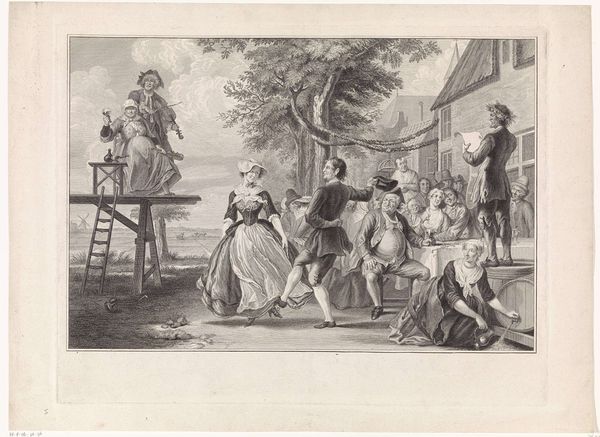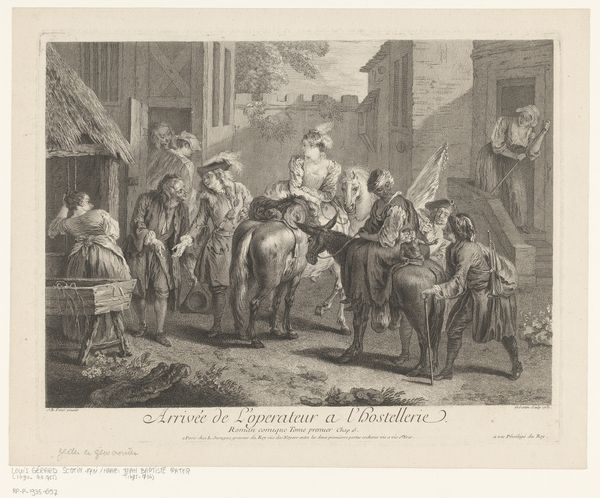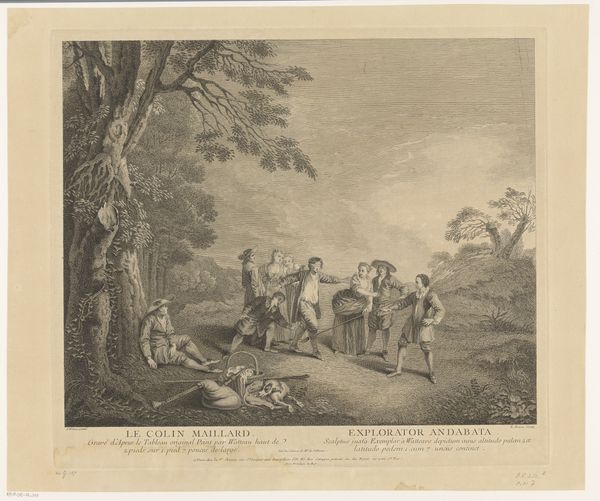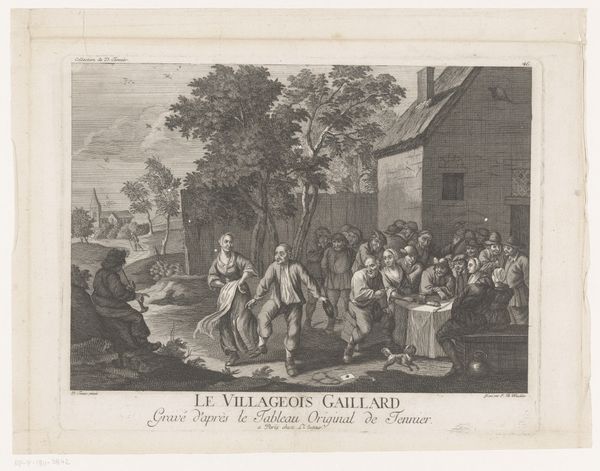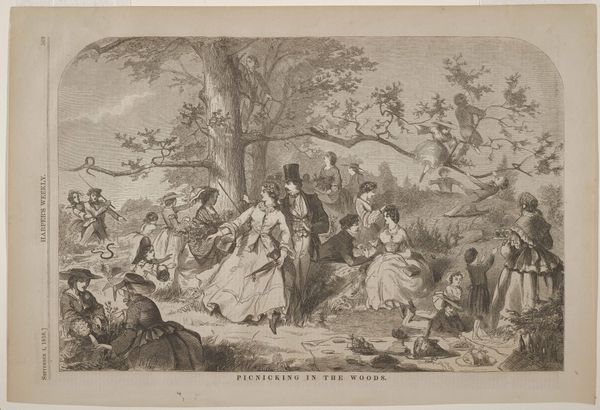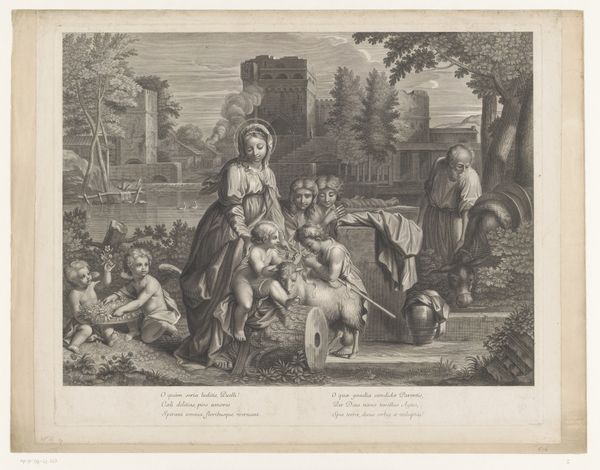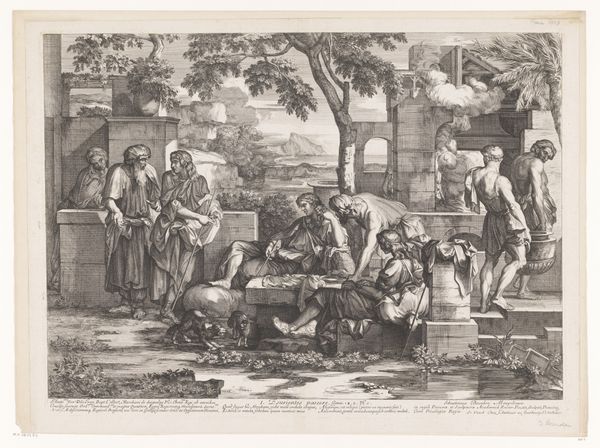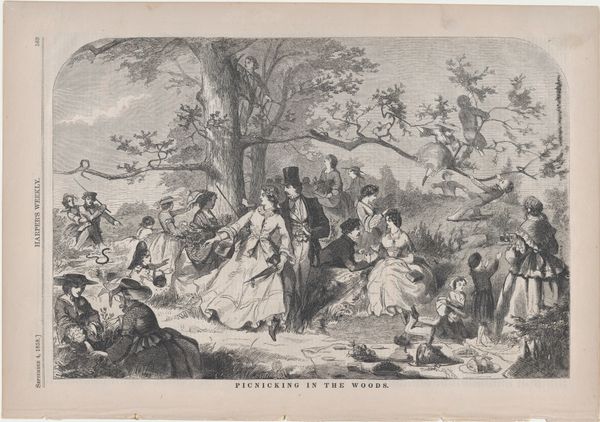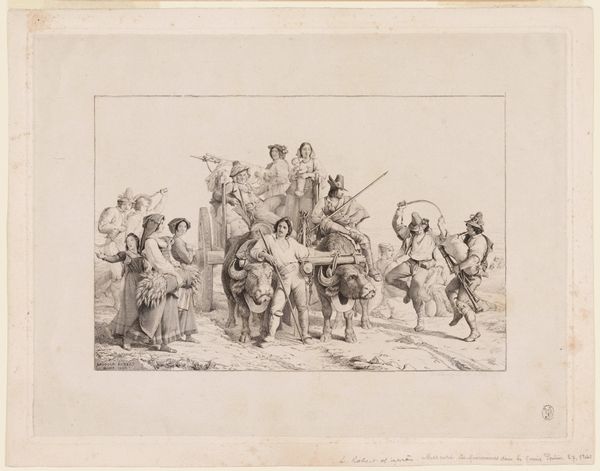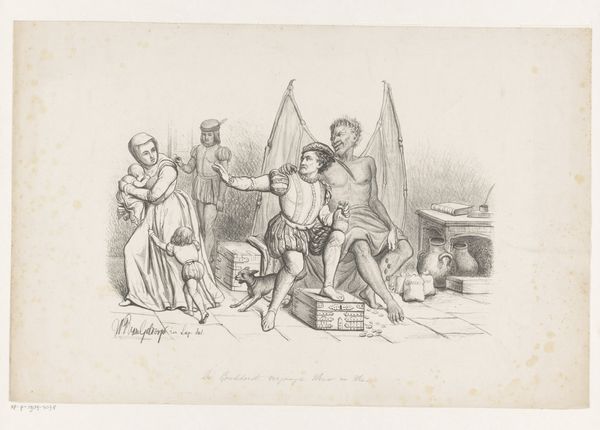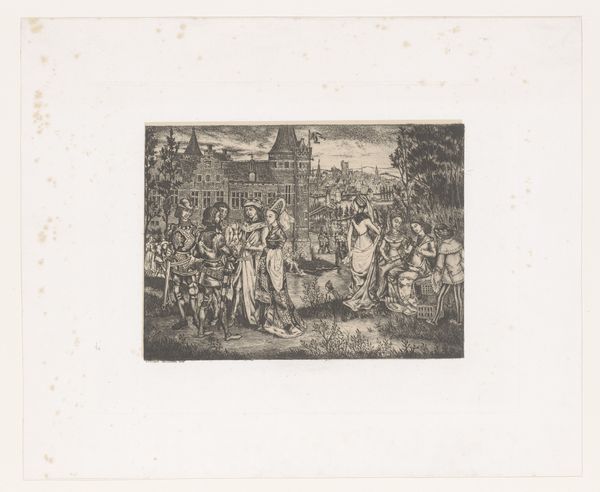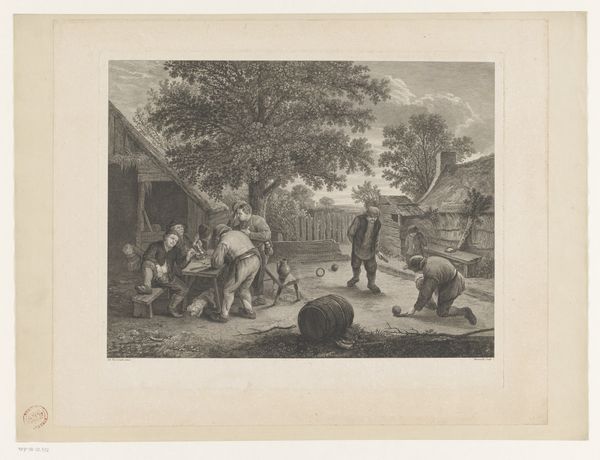
print, engraving
#
narrative-art
# print
#
asian-art
#
traditional media
#
landscape
#
figuration
#
genre-painting
#
engraving
Dimensions: height 413 mm, width 610 mm
Copyright: Rijks Museum: Open Domain
Curator: What strikes me immediately about this image is its composition. It has the feeling of a stage, doesn't it? The dancer is spotlighted in the center, framed by the audience to the left and musicians to the right. Editor: Indeed. What we're viewing is an engraving entitled "Ronggeng dans te Java", dating from after 1856, credited to Carel Christiaan Antony Last. It's currently held here at the Rijksmuseum. I find its portrayal of cultural performance deeply intriguing, specifically how it situates a very local art form within a potentially colonial gaze. Curator: The colonial gaze is definitely a lens through which we can read this. Look at the faces of the onlookers on the left – the distinctly European features standing in stark contrast to the local inhabitants. The artist seems concerned with the act of witnessing itself. Do they understand what's happening before them, or is it merely exotic spectacle? Editor: The positioning of the musicians, with their traditional instruments, feels deliberately ethnographic. The artist positions them almost like specimens, cataloging aspects of Javanese culture. I am interested in what this reveals about power dynamics between observer and observed at the time. What kind of role is the Western gaze having on this image? Curator: Precisely! We must consider the significance of the ronggeng tradition itself. Ronggeng is more than just dance; it embodies sensuality, social connection, and ritual. It represents an intersection of entertainment and spiritual practice. Perhaps these foreigners were interpreting a tradition filtered by their own assumptions. Editor: It makes me wonder about the function of art at that moment in history and about Last's possible role in shaping a Dutch idea of "the Other." "Ronggeng dans te Java" can certainly lead us to broader conversations about representation, exoticism, and the cultural politics embedded in 19th-century visual imagery. Curator: Absolutely, there is much to think about in regards to cultural representation and performance. We cannot know the whole story, but we can, and should, analyze the historical context and explore the rich interplay of meanings imbedded in cultural imagery. Editor: A potent image with layers of narrative to unfold, its artistic presentation is only part of a story still unfolding to this day.
Comments
No comments
Be the first to comment and join the conversation on the ultimate creative platform.
